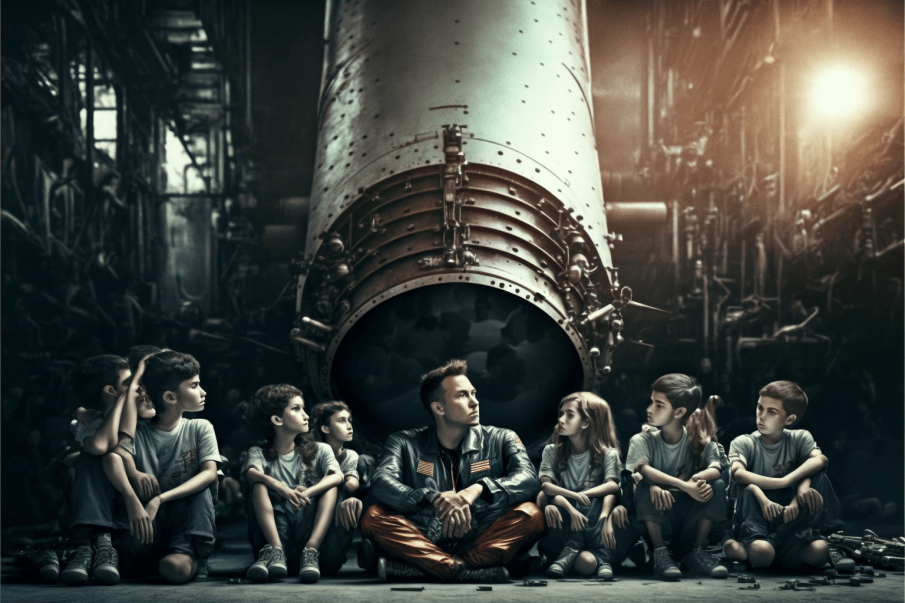Curriculum
🧵 3D Printing Course, Innovative Learning Environments, Creative Process and Design Thinking 💡🥼👷♀️STEM & English Education 🎓Masterclass for Students & Teachers
🧵 Intro to 3D Printing and innovative learning environments
0/12📐3D Modelling - Mockup & Prototyping - 3D Design Software
0/19🔪 Slicing Software and 3D Printing your model
0/9🧰 3D Printer Setting and essentials | Safety | Care & Troubleshooting
0/11🎓 At School: 3D printing in the classroom
0/13-
🟢🎓👩🔬👷♂️🔬🧵🤖⚡💻📐🎲👽🔨🤯🥽🎧 Digital Repository, Innovative Learning Environments, AR/VR and Metaverse, 3D Printing, Coding, AI, Robotics and using Games for STEM Education
-
🤝🎧🎓🔬🧵🙌🥼💡 Active Learning TEAL Methodology: Using Technology, Teamwork, and 3D Design
-
🆕🎓🙌 From Good to Great: Using Retrospective Activities to Improve Team Outcomes
-
👩🔬🎓🔬🧵⚡💡 The maker movement in Education STEM STEAM
-
🎓🔬🧵🎧💡 3D Printing and learning by doing in Education: “Fablab and Creative Ateliers”
-
🎓🔬🧵🎧💡 PBL Project Based Learning and 3D printing
-
📐🎲🧵🎓🎧 How to Use Tinkercad for PBL Project-based Learning
-
🆕🧵🎓 3D Printing into the School Curriculum: Benefits, Examples, and Suggestions
-
🆕🧵🎓 Challenges of implementing 3D printing in the classroom
-
🆕🧵🎓 Effective Assessment Strategies for 3D Printing in Education
-
🆕🧵🎓 Effective Management of a 3D Printing Lab: Tips and Suggestions
-
🆕🧵🎓🥼 Activity: Understanding the difference between subtractive and additive methods
-
🆕🧵🎓 3D Printing for Children at Home and at School
👷♀️ 3D Printing in STEM Education and other 🎓School subjects
0/4🧩 Problem Solving 🎨 Creativity 📐Design Thinking with 3D Printing
0/4🏁 Let's print and conclusion
0/5🟢🎓👩🔬👷♂️🔬🧵🤖⚡💻📐🎲👽🔨🤯🥽🎧 Digital Repository, Innovative Learning Environments, AR/VR and Metaverse, 3D Printing, Coding, AI, Robotics and using Games for STEM Education
In the modern educational landscape, it is increasingly important to incorporate innovative technologies and digital resources into the learning process. These resources can provide a range of benefits, including enhanced engagement and motivation, as well as increased access to a variety of learning materials. One key tool that can support the use of these resources is a digital repository, which is a centralized location where educational materials can be stored, organized, and accessed. In this lesson, we will explore how innovative technologies, such as 3D printing, robotics, and programming, can be used to enhance the learning experience and support student success.
We will also discuss the role of artificial intelligence (AI) in education, and how it can be used to personalize learning and automate administrative tasks. We will explore ideas and how flexible space design and educational technology can facilitate active learning pedagogy. Creating a future classroom is more than investing in furniture and equipment. It all starts with a mindset of innovative pedagogy.
Finally, we will look at the use of coding with Arduino kits and electronics in the classroom, and how it can provide students with valuable skills and knowledge in a variety of areas.
Scientific evidence suggests that amazing teachers are the key to thriving students and a good education. Studies have shown that students who have strong relationships with their teachers and feel supported by them tend to perform better academically and are more likely to graduate from high school. Additionally, research has found that effective teachers have a significant impact on student achievement and can even close the achievement gap between disadvantaged and more advantaged students. Therefore, investing in teacher quality and supporting teachers in their professional development can have a significant and lasting impact on the success of students and the overall quality of education.
In the modern educational landscape, it is increasingly important to incorporate innovative technologies and digital resources into the learning process. These resources can provide a range of benefits, including enhanced engagement and motivation, as well as increased access to a variety of learning materials. One key tool that can support the use of these resources is a digital repository, which is a centralized location where educational materials can be stored, organized, and accessed. In this lesson, we will explore how innovative technologies, such as 3D printing, robotics, and programming, can be used to enhance the learning experience, and how a digital repository can support the organization and access these resources. By embracing these tools, educators can create a dynamic and engaging learning experience that supports student success.
Innovative learning environments
Innovative learning environments are designed to support and enhance the learning process. These environments often incorporate technology and flexible, adaptable spaces that allow for various teaching and learning approaches.
One key element of innovative learning environments is the use of technology to support and enhance the learning process. This can include the use of interactive whiteboards, tablets, and other digital tools that allow students to access and engage with a variety of learning resources. Technology can also facilitate communication and collaboration among students, allowing them to work together on projects and share ideas and insights.
Another important aspect of innovative learning environments is flexibility. These environments often feature adaptable spaces that can be reconfigured to support different teaching and learning styles. For example, a space may be set up for traditional lectures one day and transformed into a collaborative workspace the next. This flexibility allows educators to respond to the needs of their students and tailor their teaching approaches to best meet those needs.
In addition to technology and flexibility, innovative learning environments may also incorporate elements such as natural light, comfortable seating, and a variety of learning spaces to support different activities. These elements can create a positive and stimulating learning environment that encourages students to be engaged and motivated.
👷♂️ Thinking Like a Rocket Scientist and Engineer
First principles thinking is a powerful problem-solving tool developed by entrepreneur and innovator Elon Musk. It is a way of breaking down complex problems by analyzing the basics, or “first principles,” of a problem and using them to create new and innovative solutions. In this course, you will learn how to use the first principles of thinking to analyze and solve problems in engineering and other fields and you will have the opportunity to participate in interactive and hands-on activities that will help you develop your critical thinking and problem-solving skills. You will learn about the engineering design process, simulation and game-based learning, and teamwork. You will also learn about the importance of making ethical decisions and how to consider the impact of your decisions on others. Additionally, you will have the chance to hear from experts in the field through guest lectures.
🤯 The metaverse in education is coming
As you can see on our AV/VR and Metaverse course, Metaverse refers to a virtual world that is designed to be fully immersive and interactive. In the metaverse, users can interact with and explore digital environments, objects, and other users in real time. It is often imagined as a virtual world that seamlessly integrates with the physical world, where users can interact with digital content and other users in a natural and intuitive way.
The metaverse is still in the early stages of development, but it has the potential to revolutionize a wide range of industries, including entertainment, social interaction, commerce, and education. In the realm of education, it could be used to create immersive and interactive learning experiences, where students can explore virtual worlds, interact with digital content, and collaborate with other students in real time. It could also be used to create virtual classrooms, where students can attend class and participate in activities from anywhere in the world.
AI Artificial Intelligence, Coding, Robotics, and Arduino in Education
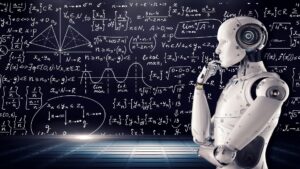
Incorporating AI into education has the potential to revolutionize the way students learn. One way that AI can be used in education is through personalized learning, which involves using algorithms and data to tailor educational content and resources to the individual needs and abilities of each student. This approach allows students to progress at their own pace and provides them with additional support and resources when needed. AI-powered tutoring systems can provide one-on-one support and feedback to students, helping them to achieve their full potential. AI can also be used to automate and streamline administrative tasks, such as grading assignments and providing feedback to students. This can free up teachers to focus on more high-level tasks, such as developing lesson plans and working with students one-on-one.
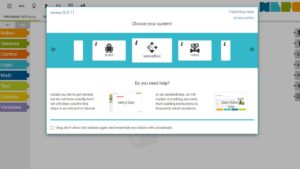
In addition to supporting traditional classroom teaching, AI and robotics can also be used to create new and innovative learning experiences. For example, students can use robotics kits to build and program their own robots, learning about engineering and problem-solving in the process. AI and robotics can also be used to create immersive, interactive learning experiences, such as virtual field trips or simulations.AI, coding, and robotics are rapidly becoming essential skills in today’s increasingly digital world.
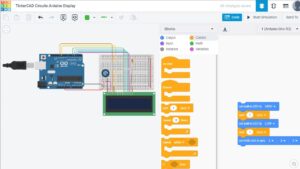
Coding with Arduino kits and electronics is a popular activity in many classrooms. It is designed to be easy to use, even for students with little or no programming experience. Using an Arduino kit, students can learn to code and build their own projects, such as simple robots or interactive displays. The kit includes a microcontroller, which is a small computer that can be programmed to control various electronic components, such as motors, sensors, and LEDs. Incorporating coding with Arduino kits and electronics into the classroom can provide students with valuable skills and knowledge in a variety of areas, including computer science, engineering, and problem-solving. These activities can be incorporated into a variety of subjects, such as math, science, or computer science, and can be tailored to the interests and abilities of individual students.
These technologies are not only used in a variety of industries but also have the potential to transform education and the way students learn. By incorporating these technologies into the classroom, educators can provide students with valuable skills and knowledge that can help them succeed in the workforce and in their personal lives. The use of AI, Coding, and Robotics in the classroom has the potential to enhance student engagement and motivation, as well as provide new and innovative learning experiences. By embracing these tools, educators can create dynamic and engaging learning environments that support student success.
3D printing, robotics, coding, and other STEM-related activities

Incorporating 3D printing, robotics, coding, and other STEM-related activities into innovative learning environments can be a powerful way to engage students and promote hands-on learning. These activities allow students to apply what they have learned in a practical setting, helping them to better understand and retain the material.
3D printing, for example, can be used to teach students about design, engineering, and manufacturing concepts. Students can use 3D modeling software to design and create their own objects, which can then be printed using a 3D printer. This process allows students to see their designs come to life and helps them to better understand the design and manufacturing process.
Robotics and coding can also be valuable tools for teaching STEM concepts. Students can build and program robots to perform a variety of tasks, helping them to develop problem-solving and critical thinking skills. Coding can also be used to teach students about computer programming and algorithms, helping them to develop important skills that are in high demand in many industries.
Using games Minecraft and Kerbal Space Program to Teach STEM Concepts
Videogames like Minecraft and Kerbal Space Program can also be used to teach STEM concepts in a fun and engaging way. These games allow students to explore and learn about a variety of scientific and engineering concepts, helping them to better understand and retain the material.
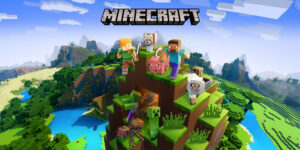
Minecraft is a popular game that can be used to teach a range of STEM concepts, including engineering, architecture, and computer programming. Within the game, players can build structures and machines using blocks and other materials, providing a fun and interactive way to explore concepts such as design, planning, and problem-solving. Additionally, the game’s open-ended nature allows students to be creative and explore a variety of scientific and engineering concepts on their own.

Kerbal Space Program is another game that can be used to teach STEM concepts in a fun and engaging way. This game allows players to design and build their own spacecraft, and then launch and fly them in a simulated space environment. Players must take into account a variety of factors, such as physics and engineering principles, to successfully complete missions and achieve their goals. This hands-on approach can be a powerful way to teach students about science and engineering concepts, helping them to better understand and retain the material.
Digital repository for lessons materials and interdisciplinary and interactive learning
Using a digital repository to store lessons and other learning materials can be a powerful way to support teachers and maximize the learning experience for students. A digital repository is a centralized location where educational resources can be stored, organized, and accessed. These resources can include text documents, videos, images, and other materials that are relevant to the lesson being taught.

One key advantage of a digital repository is that it allows for easy searching and organization of resources. With a cloud-based system, teachers can quickly and easily search for relevant materials using keywords and other search criteria. This can save time and allow teachers to easily find and incorporate resources into their lessons.
Digital repository uses semantic analysis of the text and key terms within documents and videos can be particularly helpful in maximizing the learning experience. Semantic analysis involves analyzing the meaning of words and phrases in context, which can help to identify key concepts and ideas within a document or video. By using semantic analysis, a digital repository can provide more relevant and targeted search results, helping teachers to find the most relevant resources for their lessons.
 Another way that a digital repository can support teachers is by providing a way to connect related resources and expand upon lessons. For example, a teacher might include links to additional resources within a document or video, or provide suggestions for further reading on a particular topic. This can help students to delve deeper into a subject and build upon their understanding of the material.
Another way that a digital repository can support teachers is by providing a way to connect related resources and expand upon lessons. For example, a teacher might include links to additional resources within a document or video, or provide suggestions for further reading on a particular topic. This can help students to delve deeper into a subject and build upon their understanding of the material.
